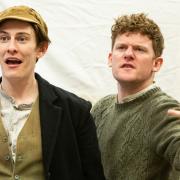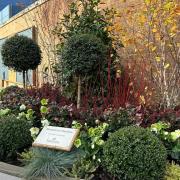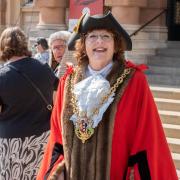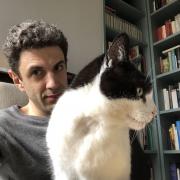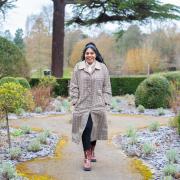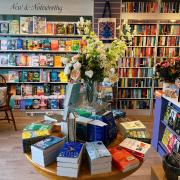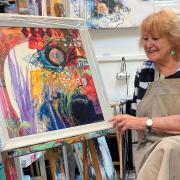Always a nature enthusiast, Dorothy Casey now has her dream job – as conservation manager for Suffolk Wildlife Trust. David Green met her
Always a nature enthusiast, Dorothy Casey now has her dream job – as conservation manager for Suffolk Wildlife Trust. David Green met her
Dorothy Casey wants to help restore Suffolk to a “living landscape” – a place where wildlife and humans can happily co-exist.As conservation manager for the county’s wildlife trust – an organisation which is widely consulted on planning and other matters – she is an influential figure, giving advice over the development of projects which range from housing estates to farmland and churchyards to community greens as well as her “bread and butter” work involving the management of designated nature reserves.“The long-term aim is to try to get wildlife back into more areas and to join these up to form habitat corridors,” she said.These corridors will have increasing importance in the face of climate change, allowing mobile species to more easily migrate in tandem with the temperature and changes in weather patterns.Dorothy, 56, who lives in an Edwardian terraced house at Bungay, has worked for the Suffolk Wildlife Trust for 20 years, first as a habitat surveyor and then as the County Wildlife Sites officer before being appointed conservation manager.While many different kinds of wildlife have become endangered over the past few decades, she is herself a member of a rare species – a conservationist who can walk across any piece of land and identify all the plants growing there, even in months when they are not flowering.The key to her success in influencing the work of farmers, companies and community groups has been her ability to build trust by providing sound practical advice – advice which recognises the need for landowners and firms to run viable businesses.“It is all about trust and this needs to be built up over a long period,” Dorothy said.In the past two decades she believes there has been a change in the attitude of many farmers – from “detachment” over wildlife issues to engagement and enthusiasm.“Farmers are looking for expertise and good advice. They increasingly look to us for accurate information and see us as having a balanced view – being aware of both conservation and commercial needs and understanding land management. Because we manage our own land and keep livestock, we have hands-on experience,” Dorothy said.In the past 20 years she has also witnessed a change in conservation philosophy – from an “oasis” mentality, in which wildlife was largely confined to isolated nature reserves, to a living landscape approach where work is focused on creating wildlife corridors and extending habitat into commercially managed farmland and woodland.
“Most of the inhabitants of these towns came from cities and knew nothing about the countryside and wildlife.”
Dorothy was brought up in north London and took a biology degree at Manchester before undertaking a Master of Science course on the same campus.It was working on her first degree that inspired her love of plants. “We used to go on field trips to the Isle of Mull and that’s what hooked me,” she said.After completing her MSc she worked in Brighton for a year – for the RSPB, English Nature and others – and then became involved in the management of new towns, first Warrington and then Milton Keynes where she helped spread the environmental message, particularly in schools.“Most of the inhabitants of these towns came from cities and knew nothing about the countryside and wildlife,” she said.When her husband, John, got a job in Switzerland she moved there with him and gave birth to their daughter, Alex, now 26.While in Switzerland. Dorothy worked part-time in nature conservation. When John obtained a post with the Centre for Environment, Fisheries and Aquaculture Science (CEFAS) at Lowestoft, the family, also including son, James, a musician, moved to Suffolk, settling first at Somerleyton and then Bungay, near the wildlife-rich Outney Common. “It is fantastic – I spend a lot of time over there,” she said.Dorothy believes the biggest current challenge over environmental change is global warming – whether or not the phenomenon is being aggravated by mankind’s activities.“By creating a mosaic of linked habitats, wildlife will stand a better chance of moving and surviving,” she said.She acknowledges that, as a result of sea level rise, saltwater will eventually invade some of Suffolk’s freshwater grazing marshes and reedbeds but points to the opportunities this will bring for the creation of new areas of saltmarsh, a declining habitat which is being “squeezed” between sea defences and the rising tides.“The search is on for sites inland which can be transformed to replace the freshwater habitat lost but there is limited scope for this in Suffolk,” Dorothy said.In her spare time Dorothy enjoys walking on the coasts of Suffolk and north Norfolk and she is very keen on the arts, particularly music, film and theatre, attending concerts and shows both locally, often at The Cut arts centre in Halesworth, and in London when the opportunity arises.Dorothy and John also enjoy their a small garden, which attracts lots of wildlife, and work an allotment in the neighbouring village of Earsham where they grow food for the family’s table.



